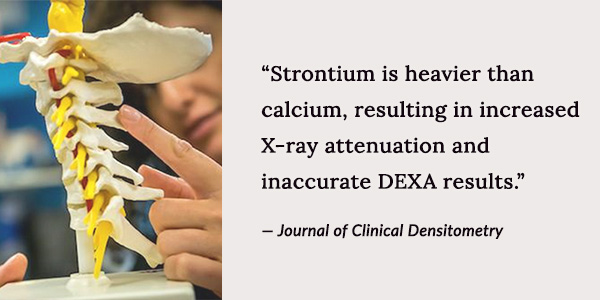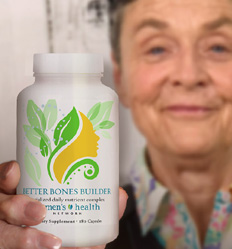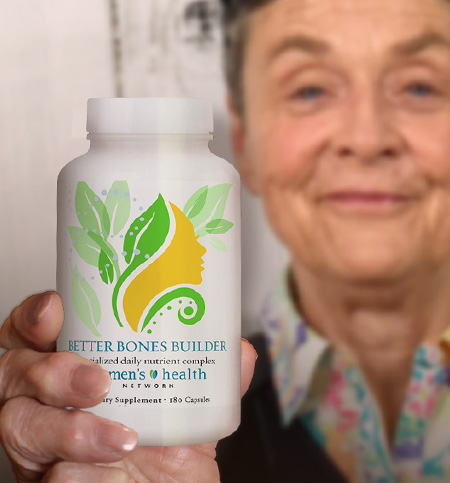Authored by Dr. Susan E. Brown, PhD
If you’ve come across claims that high-dose strontium supplementation can “rebuild bone fast,” you’re right to be skeptical. The truth is, while your next bone scan could look better on the surface after strontium use, the science shows that high-dose strontium supplementation can trigger dangerously misleading results that can put your bones at even greater risk.

Here’s what you need to know before adding any form of strontium to your bone health plan.
What is strontium — and do you need it?
Strontium is a naturally occurring mineral that’s chemically similar to calcium. In tiny amounts, it’s present in your bones and found naturally in many foods, including grains, leafy greens and seafood. Most people get all the strontium their bones need through a balanced diet — no supplements required.
So where does the idea of taking high-dose strontium come from? In recent years, some supplement makers have marketed strontium citrate as a bone-building aid. The problem is that, at high doses, strontium behaves very differently inside the body, and that difference can be misleading, even dangerous.
The problem with high-dose strontium
When used in a high-dose supplemental form, strontium actually replaces calcium within your bones. Over time, this mineral substitution builds up and causes your DEXA scan results to appear artificially high. Strontium makes your bones appear dense, healthy and strong according to the DEXA x-ray machine — but in reality, your bones could be brittle, weak and malnourished.
The form of the mineral most frequently used in high-dose supplementation – strontium citrate – has never been approved by the FDA for treatment of osteoporosis, which means that there is no official FDA guidance on dosing, safety or long-term effects for strontium citrate in osteoporosis treatment.
But don’t they use strontium as a bone drug in Europe?
Here’s another confusing layer to the conversation around strontium. In Europe for a few decades, women were often prescribed strontium ranelate, another form of strontium, because studies showed that it may decrease bone resorption and increase bone formation. However, those benefits also came with tremendous risk of serious side effects. In fact, strontium ranelate, which was initially approved for osteoporosis treatment in Europe, was eventually restricted by the European Medicines Agency (EMA) due to concerns about increased risks of life-threatening side effects. Like strontium citrate, strontium ranelate was never approved by the FDA for use in the treatment of osteoporosis in the United States.
The natural approach to bone health
Instead of relying on high-dose strontium to strengthen your skeleton, focus on a natural bone supplement that incorporates key nutrients like calcium, magnesium, vitamins D and K2, and collagen-building nutrient compounds — all natural ingredients which work synergistically to support strong, flexible bones for life.
And always remember that bone health isn’t just about density — it’s about strength, flexibility and long-term resilience. Although strontium may result in a bone scan that looks promising, the reality is that it may also be providing a false sense of security. Real bone health comes from nourishing your body with proven nutrients that restore your bones’ natural structure and flexibility — so your bones aren’t just dense, they’re truly strong for life.













